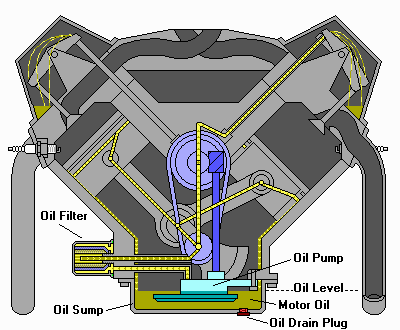I have never seen the inside of a car engine so i was wondering if theres any pipes that the oil goes through or does it stay in a sump like in this animation?
http://auto.howstuffworks.com/engine3.htm
Is there just a little bit that is on the bottom or does the entire engine fill with oil?
I am pretty sure it goes to the lifters, is this true and if so, how does it get up there.
I was wondering what all gets lubricated and how everything goes about getting filtered, also, does fuel or anything get in the oil?
http://auto.howstuffworks.com/engine3.htm
Is there just a little bit that is on the bottom or does the entire engine fill with oil?
I am pretty sure it goes to the lifters, is this true and if so, how does it get up there.
I was wondering what all gets lubricated and how everything goes about getting filtered, also, does fuel or anything get in the oil?






